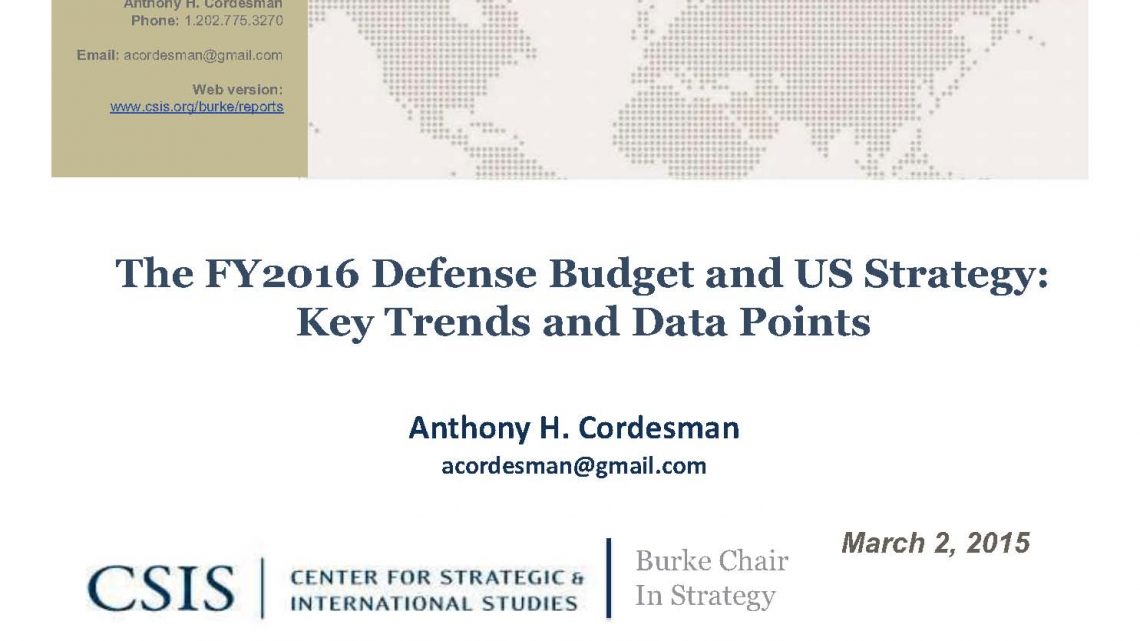The FY2016 Defense Budget and US Strategy: Key Trends and Data Points- By Anthony H. Cordesman
Every year, the Department of Defense, OMB, the CBO, and GAO provide a wide range of materials analyzing the President’s proposed defense budget, and current trends in defense spending. These amount to thousands of pages and a wide variety of metrics, maps, charts, and other data.
The Burke Chair has prepared a summary of the key metrics in these presentations which puts their data in the broader context of US strategic needs and priorities, the overall forces shaping the crisis in federal spending, and the credibility of the budget submission in view of outside analyses of US defense spending by the Congressional Budget Office (CBO), General Accountability Office (GAO), and work done on global defense spending by the IISS and SIPRI. (…)
Highlighting the Lack of Real Strategic Planning and Realistic Programming
This analysis focuses on key national, strategic, and defense spending issues and is not intended as a comprehensive survey of strategy, programs, and budgets. It also highlights the lack of real strategic planning within the Department of Defense. Although the total mass of DoD budget presentation data runs over 500 pages, the references to strategy are limited and virtually never provide any meaningful detail or content on how a strategy will be implemented or resources will be allocated.
While reference is often made to the cost of a five or “future year defense program” (FYDP), one of the key lessons of this analysis is that if one looks closely at the budget data, there is virtually no information as to how this spending will affect the overall force structure, readiness, and modernization of US forces, or how it will shape mission capabilities and the capabilities of the key combatant commands. In spite of the large amount of strategic rhetoric involved, the mass of actual data almost exclusively cover line item budgeting for a single coming year. They are all budget, and not programming or strategy. (…)











